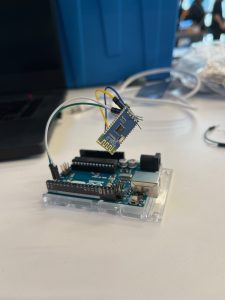This week, I mainly was finalizing the construction of the board with the parts I was not able to get done last week, and I am beginning to set up the low-power and Bluetooth aspects of the microcontroller. Now that the sensors are set up and functioning, these other parts and integration with the other pieces are now going to be the focus, along with the game aspect being set up with the passcodes. I don’t have any photos this week, as nothing has changed visually from the previous week; it’s just behind-the-scenes stuff.
I am currently scheduled to complete my parts. The focus now is the board’s aesthetics and the wireless connectivity with the application and door lock. I will spend the next week on both of these two parts. However, the main focus will be the wireless connection and low power, as functionality needs to come first for verification and testing.
Verifications:
- Ensure the consistency of the sensors and that they work with every step, and ignore instances of the user standing on the board, NOT stepping. This should work nearly every time without fail.
- Ensure an extended battery life using the low-power system to minimize the time required to charge the device. Ideally, I would like the board to last a bare minimum of a few days of heavy usage.
- Ensure the device is durable from dust, dirt, water, and usage. We will have to throw water and dirt on the device, poorly treat the device by stomping way past the weight limit, etc. This device needs to last and be reliable for everyday use, so we must go a bit extreme in this area.
Validations:
- Ensuring a quick and low-latency Bluetooth connection to the door lock and the app so that there is no difference in time to traditional lock systems and there isn’t a delay causing a malfunction. This needs to work every time without fail or else it can’t beat out a conventional locking system.
- Ensure that the entire system works with a smooth flow that you can verify on the app, use the board, and then unlock the door as desired. This does not have metrics and is more of a test of comfort and ease of usage with multiple users with varying experiences with the device and/or Dance Dance Revolution.










